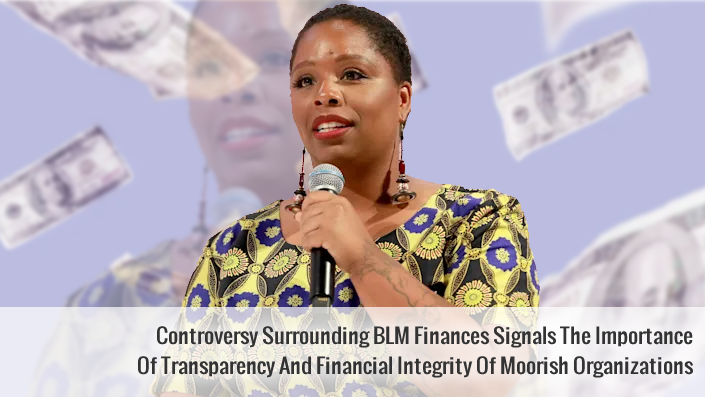As with any competent organizational efforts, meticulous planning is vital to its long term success and image. While controlling public perception often requires adaptability to the ongoing changes in society’s values, financial integrity and transparency can be preplanned from the outset and ought not be a matter of debate nor confusion years later.
The leadership of Black Lives Matter (BLM) Global Network Foundation, a global organization on a mission to “eradicate white supremacy” and “build local power to intervene in violence [against Blacks] by the state and vigilantes”, is coming under fire from the mainstream media once again for alleged impropriety in its management of financial contributions.
Co-founder Patrisse Cullors, who resigned from the foundation in 2021, participated in a conference call last week with “numerous Black-oriented media outlets” to address concerns raised by a recent New York magazine article about a $6 million cash purchase of a California house in October 2020. The article reports that “the transaction has not been previously reported” and the BLM leadership hoped to “keep the house’s existence a secret.”
Cullors explained that the house served as a “multipurpose property”, used as a content production center and a haven – a safe space for BLM activists due to multiple “credible threats” against the foundation’s leaders. Cullors added that she stayed at the home for four days following a warning by the FBI of a threat to her life. While this may justify the secrecy around the purchase, it’s important to understand that nothing is truly secret in this age of information. In some case, the mere attempt to keep something a secret can backfire in unexpected ways – revealing the secret and tarnishing one’s reputation. It’s important that Moorish organizations take heed, carefully plan and maintain good financial integrity and transparency in their operations.
It’s this author’s firmly held position that no pledge of financial contribution should be made to any organizations without first knowing exactly where the funds are going, stored, and allocated. Does the organization have a dedicated treasury? Does it provide quarterly expense reports or access to more frequent P&L reports either publicly or directly to contributors? Does it have measures to protect itself from internal financial abuse? For example, are there checks and balances written in its by-laws to ensure each transaction requires approval, is recorded and reviewed or audited by a committee? Without these measures, an organization creates an environment where finances are at a greater risk of abuse.
This should be a teachable moment for Moorish organizations in the infant stages of organizing. Follow the principle of the five P’s: Proper planning prevents poor performance. Adhere to a practice of transparency and do not delude yourself into thinking transactions can be kept secret. “For there is nothing covered that will not be revealed, nor hidden that will not be known.” – Luke 12:2

